Vauxhall Astra vs Toyota Proace City – Which car suits you better?
Everyday use, family trips or long-distance drives – here’s where the differences show.
Discover whether Vauxhall Astra or Toyota Proace City fits your lifestyle better.
Costs and Efficiency: Looking at overall running costs, both models reveal some interesting differences in everyday economy.
Toyota Proace City has a clearly perceptible advantage in terms of price – it starts at 20800 £, while the Vauxhall Astra costs 25200 £. That’s a price difference of around 4393 £.
Fuel consumption also shows a difference: Vauxhall Astra manages with 2.20 L and is therefore convincingly more efficient than the Toyota Proace City with 5.30 L. The difference is about 3.10 L per 100 km.
In terms of energy consumption, the advantage goes to the Vauxhall Astra: with 15.40 kWh per 100 km, it’s slightly more efficient than the Toyota Proace City with 18.10 kWh. That’s a difference of about 2.70 kWh.
As for range, the Vauxhall Astra performs slightly better – achieving up to 419 km, about 76 km more than the Toyota Proace City.
Engine and Performance: Power, torque and acceleration say a lot about how a car feels on the road. This is where you see which model delivers more driving dynamics.
When it comes to engine power, the Vauxhall Astra has a evident edge – offering 225 HP compared to 136 HP. That’s roughly 89 HP more horsepower.
In acceleration from 0 to 100 km/h, the Vauxhall Astra is significantly quicker – completing the sprint in 7.50 s, while the Toyota Proace City takes 11.50 s. That’s about 4 s faster.
In terms of top speed, the Vauxhall Astra performs noticeable better – reaching 235 km/h, while the Toyota Proace City tops out at 186 km/h. The difference is around 49 km/h.
There’s also a difference in torque: Vauxhall Astra pulls a bit stronger with 360 Nm compared to 300 Nm. That’s about 60 Nm difference.
Space and Everyday Use: Cabin size, boot volume and payload all play a role in everyday practicality. Here, comfort and flexibility make the difference.
Seats: Toyota Proace City offers noticeable more seating capacity – 7 vs 5.
In curb weight, Vauxhall Astra is hardly perceptible lighter – 1341 kg compared to 1366 kg. The difference is around 25 kg.
In terms of boot space, the Toyota Proace City offers clearly more room – 912 L compared to 422 L. That’s a difference of about 490 L.
In maximum load capacity, the Toyota Proace City performs clearly better – up to 2693 L, which is about 1354 L more than the Vauxhall Astra.
When it comes to payload, Toyota Proace City significantly takes the win – 869 kg compared to 509 kg. That’s a difference of about 360 kg.
Who wins the race?
The Vauxhall Astra proves to be outperforms in nearly all aspects and therefore becomes our DriveDuel Champion!
Vauxhall Astra is the better all-rounder in this comparison.
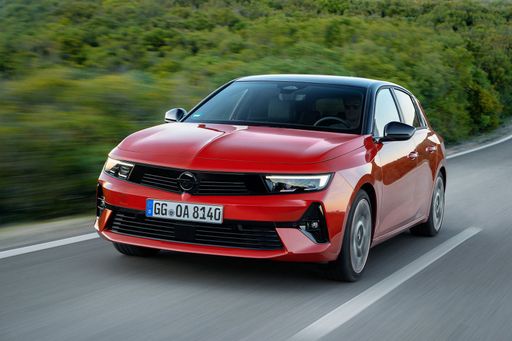
Vauxhall Astra
Vauxhall Astra
The Opel Astra exudes a sleek and modern design, making it a standout choice in the compact car segment. Its interior is thoughtfully crafted, providing both comfort and cutting-edge technology for an enhanced driving experience. The vehicle is also celebrated for its efficient performance, adeptly balancing power with fuel economy to suit urban and long-distance journeys alike.
details @ www.media.stellantis.com
@ www.media.stellantis.com
 @ www.media.stellantis.com
@ www.media.stellantis.com
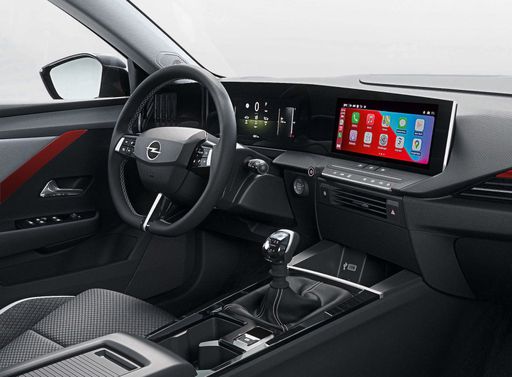 @ www.media.stellantis.com
@ www.media.stellantis.com
Toyota Proace City
The Toyota Proace City High Roof Combi is designed to seamlessly blend practicality with comfort, making it an ideal choice for families and businesses alike. Its versatile interior allows for flexible seating and cargo arrangements, catering to a variety of transport needs. Equipped with modern technology and advanced safety features, this vehicle ensures a reliable and secure driving experience.
details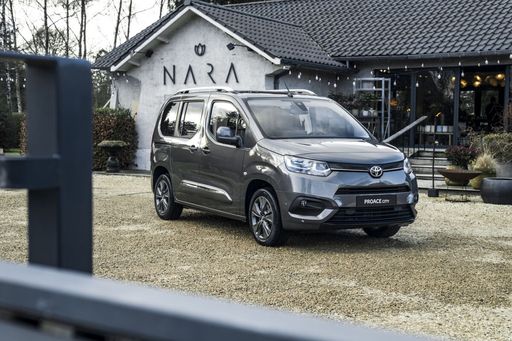 @ Toyota Deutschland
@ Toyota Deutschland
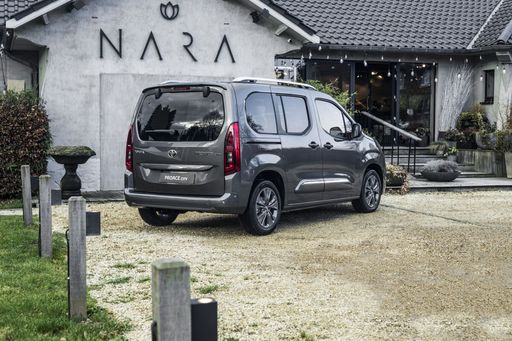 @ Toyota Deutschland
@ Toyota Deutschland
 @ Toyota Deutschland
@ Toyota Deutschland
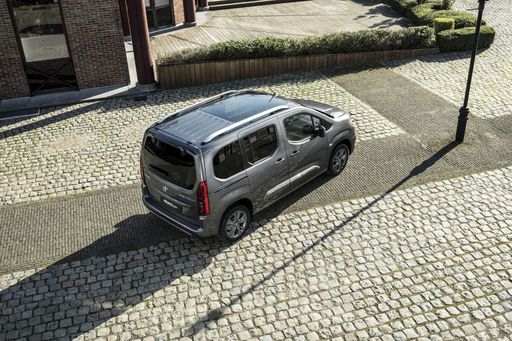 @ Toyota Deutschland
@ Toyota Deutschland
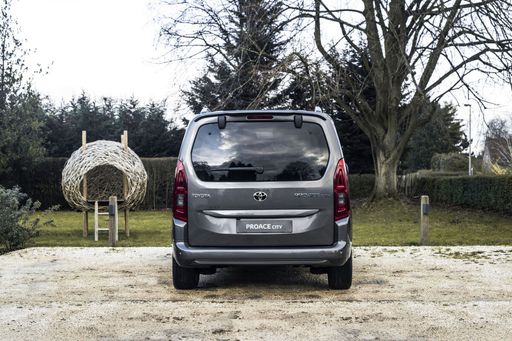 @ Toyota Deutschland
@ Toyota Deutschland
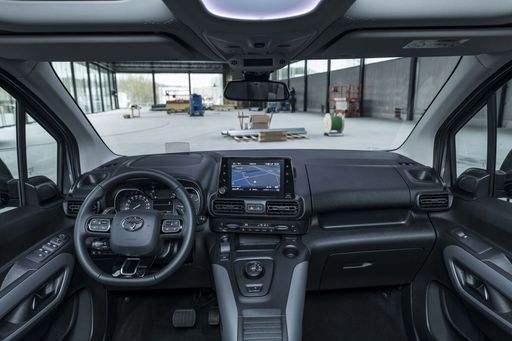 @ Toyota Deutschland
@ Toyota Deutschland

|

|
|
|
|
Costs and Consumption |
|
|---|---|
|
Price
25200 - 40500 £
|
Price
20800 - 44100 £
|
|
Consumption L/100km
2.2 - 6 L
|
Consumption L/100km
5.3 - 6.3 L
|
|
Consumption kWh/100km
15.40 kWh
|
Consumption kWh/100km
18.10 kWh
|
|
Electric Range
82 - 419 km
|
Electric Range
343 km
|
|
Battery Capacity
51 kWh
|
Battery Capacity
-
|
|
co2
0 - 135 g/km
|
co2
0 - 146 g/km
|
|
Fuel tank capacity
42 - 52 L
|
Fuel tank capacity
50 - 61 L
|
Dimensions and Body |
|
|---|---|
|
Body Type
Hatchback
|
Body Type
High Roof Estate
|
|
Seats
5
|
Seats
5 - 7
|
|
Doors
5
|
Doors
4 - 5
|
|
Curb weight
1341 - 1736 kg
|
Curb weight
1366 - 1664 kg
|
|
Trunk capacity
352 - 422 L
|
Trunk capacity
322 - 912 L
|
|
Length
4374 mm
|
Length
4401 - 4751 mm
|
|
Width
1860 mm
|
Width
1848 mm
|
|
Height
1432 - 1488 mm
|
Height
1812 - 1818 mm
|
|
Max trunk capacity
1268 - 1339 L
|
Max trunk capacity
2126 - 2693 L
|
|
Payload
414 - 509 kg
|
Payload
525 - 869 kg
|
Engine and Performance |
|
|---|---|
|
Engine Type
Petrol, Diesel, Electric, Petrol MHEV, Plugin Hybrid
|
Engine Type
Petrol, Diesel, Electric
|
|
Transmission
Manuel, Automatic
|
Transmission
Manuel, Automatic
|
|
Transmission Detail
Manual Gearbox, Automatic Gearbox, Reduction Gearbox, Dual-Clutch Automatic
|
Transmission Detail
Manual Gearbox, Reduction Gearbox, Automatic Gearbox
|
|
Drive Type
Front-Wheel Drive
|
Drive Type
Front-Wheel Drive
|
|
Power HP
130 - 225 HP
|
Power HP
102 - 136 HP
|
|
Acceleration 0-100km/h
7.5 - 10.6 s
|
Acceleration 0-100km/h
11.5 - 13.2 s
|
|
Max Speed
170 - 235 km/h
|
Max Speed
135 - 186 km/h
|
|
Torque
230 - 360 Nm
|
Torque
205 - 300 Nm
|
|
Number of Cylinders
3 - 4
|
Number of Cylinders
3 - 4
|
|
Power kW
96 - 165 kW
|
Power kW
75 - 100 kW
|
|
Engine capacity
1199 - 1598 cm3
|
Engine capacity
1199 - 1499 cm3
|
General |
|
|---|---|
|
Model Year
2023 - 2025
|
Model Year
2024 - 2025
|
|
CO2 Efficiency Class
D, A, C, B
|
CO2 Efficiency Class
E, A
|
|
Brand
Vauxhall
|
Brand
Toyota
|
What drive types are available for the Vauxhall Astra?
Available configurations include Front-Wheel Drive.
The prices and data displayed are estimates based on German list prices and may vary by country. This information is not legally binding.
